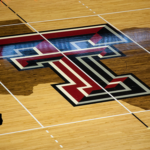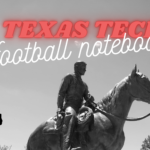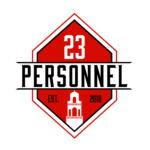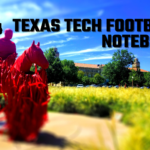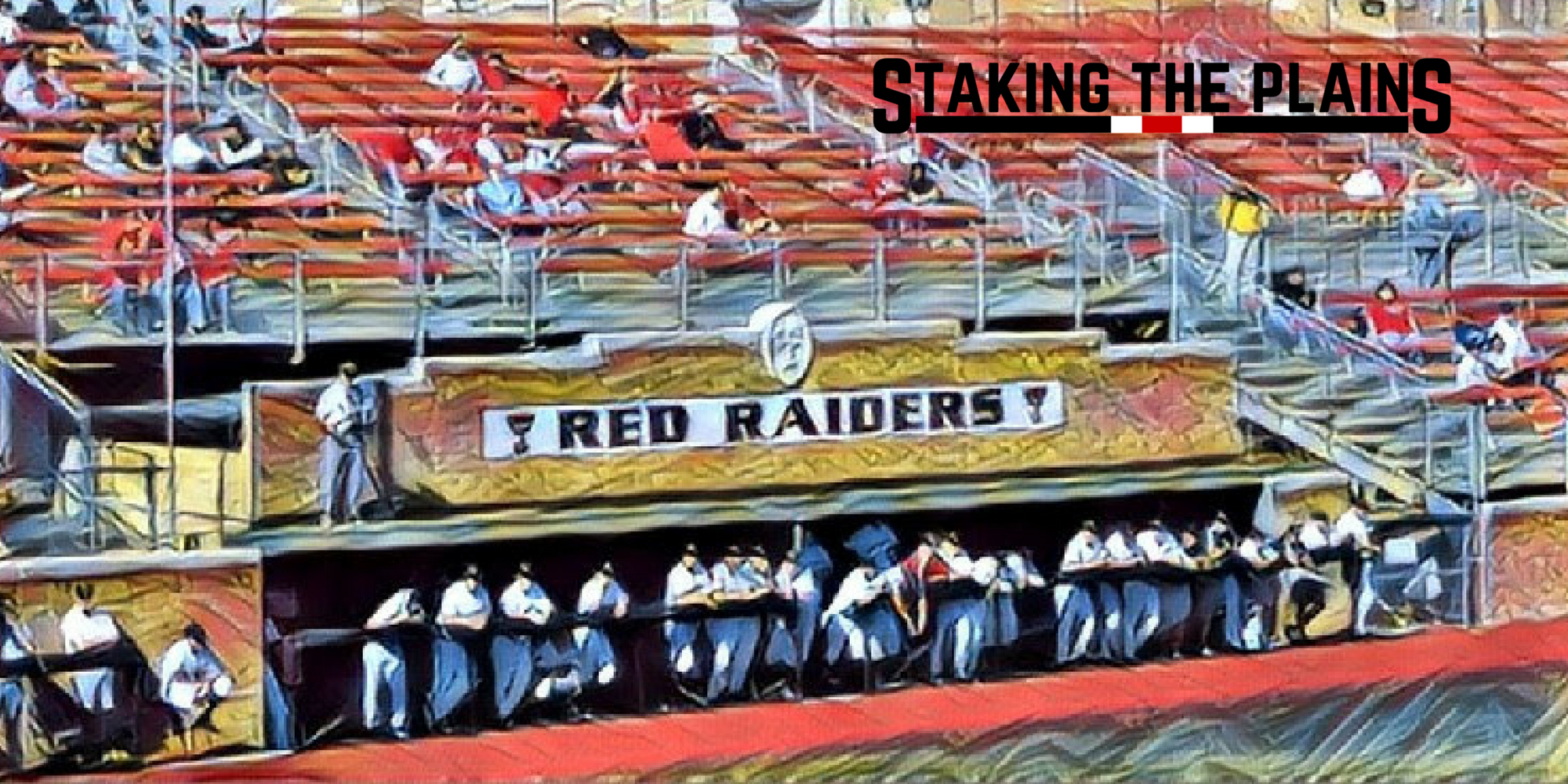Some Red Raider baseball players experienced the best moments of their life this week. All that hard work they put into their high school and college careers resulted in a call from a major league organization telling them that they selected them and want to pay them to play the game they love.
We saw 11 Red Raiders see their name selected over the past few days, a new record for the team. This includes one on day one, three on day two and seven on day three. Not only that, but we also saw a couple Texas Tech signees and a former Red Raider get selected as well.
We’re going to take a look at each draftee, where he was taken, why he was taken where he was and if there’s a chance he returns to Lubbock. We’ll go in order by where the player was drafted:
Draftees:
- Grant Little, OF, San Diego Padres (2nd round, 74th overall): – I was shocked when I found out Little went on the first day. He was ranked in the 120’s for draft prospects and was a very good hitter at Tech, but didn’t have one specific tool that stood out. In fact, I didn’t even realize he was draft eligible until a couple weeks ago when I saw him on draft lists. Despite him being a sophomore, he becomes draft eligible because he’s 21 before the draft. He goes to a Padres organization that has just one OF in their top 15 prospects and will likely need one in 2-3 years, as they have one prospect and two alright OF who will run out of arbitration around that time. It’s a perfect situation for Little. Will He Go?: No doubt. In an interview with me in 2015, he said at the time he would go if selected in the top six rounds. He has a slot of $812.2 K and the fact that the Padres drafted him on day one means that they likely have big league plans for him. He should go.
- Steven Gingery, LHP, St. Louis Cardinals (4th round, 123rd overall): -Meanwhile, Gingery fell a little bit. He was projected to go in the late first/early second at one point, but the Tommy John surgery caused him to fall to the fourth round. However, he still ended up in a good spot. The Cardinals have done a pretty good job developing their pitchers over the years, and have dealt with pitchers that have had that surgery (their top prospect Alex Reyes is recovering from it right now). If he recovers well, he’ll have a shot at the majors as a guy at the bottom of the rotation. Will He Go?: I believe so. His slot value is at 446.9K and the team likely thinks of him as a big league prospect like Little. Sure, perhaps he can stay and retain his value and double his slot value, but he would also risk a setback or a bad season on the mound and lose money. In my opinion, it would be wise for him to go.
- Michael Berglund, C, Tampa Bay Rays (8th round, 240th overall): – Not a Tech player anymore, but the projected starting catcher to begin the season did get picked in the eighth round of the MLB draft. If he were to stay at Tech, he likely would not be eligible yet because he’s not 21. There’s speculation as to why he left, but this could possibly be a reason why (although I doubt it).
- Ryan Shetter, RHP, Atlanta Braves (9th round, 262nd overall): – Shetter has been up and down, but he’s done very well for the Red Raiders in his career. He was a key piece out of the pen in 2016, was a weekend started in 2017 that won some games, and has played very role imaginable this season. He’s probably Tech’s third or fourth most important pitcher this season and has the ability to shutdown a team, as he did against New Mexico State to save Kilian and Martin. Will He Go?: Likely. Recently we haven’t seen Tech players taken this high stay in college. His slot value is 151.2K and that’s hard to pass up, especially since teams will likely offer less when he’s a senior.
- Jose Quezada, RHR, San Diego Padres (10th round, 291st overall): – Good for Quezada. The senior was not drafted last year, yet with his sub-2 ERA this season and his expanded role as the go to short reliever, he was able to be drafted on Day 2. He won’t get as much as the juniors because he can’t return to college, but he still has a slot value of 141.6K and will get paid. He also will go to the same organization as Grant Little to the Padres. Will He Go?: Duh, he’s a senior. If baseball doesn’t work out, his future career can wait.
- Davis Martin, RHP, Chicago White Sox (14th round, 408th overall): – I’d say Martin had the most surprising draft. Before the season, he was projected to go in third or fourth round, and was still a Top 150 draft prospect by draft time. However, possibly due to his 4.56 ERA (a jump from 2.52 and 3.07) and he lower pitch count this season, Martin slid all the way to the 14th round. The White Sox are absolutely loaded as far as starting pitching prospect goes, but perhaps Martin can make his mark as a reliever in the league. Will He Go?: Maybe, but maybe not. This is possibly the biggest mystery out of this group. Martin was projected to be a high pick, so going back to school could help him regain that value. Even though seniors don’t get paid quite as much, the increase in value would still be more than what he would get this year. He’d have to bet on himself, but that may be a risk he would want to take. The highest round pick under Tadlock that came back was Tim Proudfoot in 2014. He fell from a 21st round pick to a 35th round pick. Oof.
- Ty Harpenau, RHP, Atlanta Braves (16th round, 472nd overall): – Harpenau reminds me a lot of Hayden Howard, as he’s the long reliever who will come in whenever the situation best calls for it. Howard was picked in the 18th round, and Harpenau in the 16th round. Harpenau’s career started slow, but he has really come around his year, and we see why Tadlock started him opening weekend of his freshman year. The Braves also have a tendency to draft Tech pitchers, as in the past few years they’ve drafted Matt Custred, Matt Withrow, Ryan Shetter and Ty Harpenau. Will He Go?: I bet so. I don’t see his stock increasing much more than it already has, and seniors don’t get as much money because there’s not threat to return to college. He had a nice year, but I’d be very surprised if he returns.
- Caleb Kilian, RHP, Baltimore Orioles (20th round, 595th overall): – I didn’t realize that Kilian was draft eligible until Cody Empkey told me on twitter after day two (thanks, by the way). You can’t become draft eligible unless you’re a junior or you’re 21, but also if your birthday falls 45 days after you turn 21. Kilian fell into his last category. He was a reliever with a 3.55 ERA last year, and was nearly impossible to hit this season out of the pen, so he was moved to a starter, and became a first team pitcher and nearly pitcher of the year. He had a sub-2 ERA, but had a bad start or two near the end of the season and ended with a still good 2.39 ERA. Will He Go?: This one is also difficult to predict, and typically I’d go yes, but I’m going to say he stays. The reason why? He came on really late in the year as a starter and with his stuff, can increase his draft stock quite a bit I believe. And unlike most draftees, he’s just a sophomore, so he’ll still be a junior next year and still can request more money by threatening to return to school. I won’t blame him if he leaves, and usually I’m pro going pro, but in this case I think he should stay.
- Cody Farhat, CF, Cleveland Indians (23rd round, 703rd overall): – Farhat has had a pretty good bat in his career, but the reason why he got drafted where he did was because of his elite defense. He can catch anything in center field and has the arm to throw out people as well. There probably no major league plans for him, but perhaps his defense is elite enough to get him there one day, if only as a defensive replacement. Will He Go?: Likely I believe. I don’t see his stock increasing much, if at all. Although I wouldn’t be totally shocked if he stays.
- Michael Davis, 3B, Minnesota Twins (24th round, 724 overall): – Some people were worried that Davis wouldn’t get drafted, but here he goes in the 24th round. It’s very interesting that the Twins want him as a third baseman, even though he’s played second base most of his career and played shortstop. The reason why is likely because he has a cannon of the arm (typically warms up in the middle of innings as third base with Jung) and his defensive skills can be iffy sometimes, which is crucial for shortstop. Will He Go?: Yes, he’s a senior.
- Jacob Lopez, LHS, San Francisco Giants (26th round, 766th overall): – Lopez was the first Tech signee to be drafted in the 26th round. Perfect Game doesn’t list Jacob Lopez as a Tech signee, but apparently he is signed to Tech, likely in the past few months. I can’t say much about him, but a twitter post said he had a 86-90 4SFB, 84-88 2SFB, 70-73 CB and 74-76 SL. Will He Go?: Hard to tell, but I bet he doesn’t come to Lubbock because he’s already a JUCO and doesn’t have as much to increase his stock.
- Dylan Dusek, LHP, San Francisco Giants (27th round, 796th overall): – I’m so happy for Dusek. He was a hero on the 2014 CWS win, pitching eight shutout innings against Miami and five shutout innings against the College of Charleston. Although the next year he struggled, then had Tommy John, then came back ineffective before becoming an important piece of the pitching staff this year. Along with his cancer at a young age, Dusek has been through a lot, which is why I was glad to hear someone selected him. Will He Go?: Yes, he’s a senior.
- Zach Rheams, OF, New York Mets (27th round, 800th overall): – Rheams had a monster year that resulted in him being draft. His 16 home runs this year were crucial to Tech and is what got him picked. Although I do find it strange that a National League drafted him, considering there’s no DH and he hasn’t shown his defensive skills (although I want to say he started a game in the outfield). Hard work by his part was rewarded. Will He Go?: Yes, he’s a senior.
- Mason Montgomery, LHS, Chicago White Sox (39th round, 1,158th overall) – Montgomery is the lone high school product Tech signee to go in the MLB Draft, which is a little bit surprising. Most high school prospects that go in the last couple rounds are higher prospects that most teams likely won’t be able to sign away from college from their given draft position (example, Patrick Mahomes, who was taken in the 37th round). They do this either because they’re trying to save money and know they won’t sign, or the off chance they change their mind. Will He Go?: Very unlikely. Not going to say for sure, because a talented high school product named JD Murders was drafted in the 31st round and went pro two years ago. He recently was released, but he had got some good money.
The most surprising non-draftee was Max Marusak, an outfielder from Amarillo that was ranked in the Top 200 prospects that didn’t go at all. The reason why? Because he was committed to playing at Texas Tech and the position where he was projected to go likely wasn’t enough to him to go pro. Both his parents went to Tech and apparently he wanted to be here enough where he didn’t get drafted where he was supposed to and didn’t go at all.
On the MLB prospect rankings, it shows his tools, including his speed tool which is an 80, the highest possible rating. In prospective, Kyler Murray’s speed is a 70, and he’s two spots ahead of him (The scale is 20-80, with five rating intervals). He also has a field and arm tool of 55, a hit tool of 45 and a power tool of 40.
Possible Replacements:
It’s a little hard to predict these players because the guys who are replacing them may not even be on campus yet. When Tech had their previous record of 10 Red Raiders drafted, Opening Day the following year saw five newcomers start, and one player start at a new position. So I know this is way too early (and feel free to stop reading right here if you think it is), but let’s see who can replace those players.
You have to possibly replace two players in the outfield. You have to think Marusak will take one spot with his ability, but the other is a mystery. My favorite for the time being is Cody Masters, who Tadlock has high hopes for and played decent this season. Or possibly another newcomer like Tanner O’Tremba
For the infield, the only spot to replace to basically Michael Davis. We could move Klein here, have Holt at second again and have Kurt Wilson or KC Simonich in the outfield. There’s also a possibility to have Parker Kelly or Simonich here, or a freshman like Dru Baker.
For pitching, you have to potentially replace your whole starting line-up and key bullpen piece, and it’s way too hard to try and figure that all out. Erikson Lanning likely takes one spot after he returns from injury, but the others are difficult to predict. John McMillon could move back to the rotation, along with guys who have had starts like John Henry Gonzalez or Ryan Sublette.
I also have high hopes for Jake McDonald to make an impact next year, and a freshman like Mason Montgomery or Jack Sellinger could make an impact. The bullpen isn’t as hard to figure out. Caleb Freeman returns, Connor Queen is back, and so is Dane Haveman. All three haven’t been the best at times, but perhaps they will do better next year.
It was a successful week for the Red Raiders. Best of luck to those drafted who move on to the next level.

